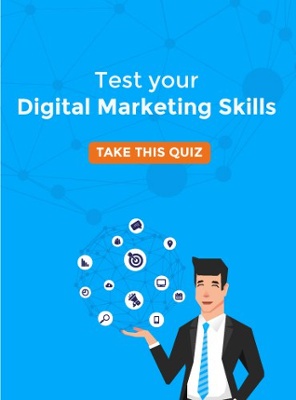Are you from an HR background or an aspiring candidate looking forward to diving into the HR career field?
\Well, we often see HR as someone responsible for facilitating the organization's overall goals through efficient human resource management, considering employees as the company's most valuable asset.
But do you know what the first step in building an organization's human capital is? Recruitment!
Recruitment is the initial process that emphasizes the type of culture that is required in the company. Recruitment is finding and hiring the best candidate who can be a good fit for the organization.
But how does one ensure finding the qualified candidates quickly and efficiently? Enters, recruitment process that requires thoughtful planning and constant evaluation.
Want to know how exactly the recruitment process works and how to design a recruitment process for your organization? Read on and find out!
What is a recruitment process?
The recruitment process is a journey of revelation for both an organization and candidates. The recruiting team strives to fill open positions with the best talent, which might take months, and need reviewing hundreds of CVs, scheduling infinite interviews, and keeping track of every step throughout the process.
And for candidates, submitting a CV in multiple formats for every organization, going through interviews for each, and often taking time off from their current jobs to do so is no cakewalk. Besides, the process often feels like an ordeal to survive instead of an opportunity to grow.
Purpose of the recruitment process
An efficient recruitment process must blend the company's DNA with the candidate's, focusing on the values, vision, mission, purpose, and benefits the candidate will receive for their work and commitment to the organization.
One of the main purposes of recruitment is to determine the potential need of a person to fill up a position in the near future.
- To increase the number of applicants to apply for a particular job to get a good result.
- Improving the selection procedure to get good results efficiently.
- To meet the organization's social and legal obligations.
- Finding the best candidate that can be a good fit for the position assigned.
- To advertise the needs of an organization and to get suitable candidates for the desired job post.
Steps of the recruitment process
We know how much first impressions matter, and this goes both ways. Therefore, while forming early judgments and fact-finding, it is imperative to note that the other individual is doing the same.
While the recruitment process is unique to every organization, these are the six fundamental steps you should take to design an effective recruitment process.
Identify the hiring need
The recruitment process starts when the organization feels the need for that position. And, you can't get what you need unless you know what you're looking for.
The important point here is to see that the generated need is presently not there in the organization, and the organization needs to hire someone for that particular task or job.
This step will affect every part of the recruitment process. Therefore, ask yourself and members close to the position relevant questions such as:
- How does this role fit into your organization?
- What are the missing skills this employee needs to fill?
- Which skills should this new hire possess in executing the job very effectively?
Designing job description
A job description states the functions and duties that the employee is entitled to do against the position for which he is assigned. Job descriptions mention the key responsibility areas that an employee has to do. These job descriptions should be catchy and should contain the description in detail.
Your job description should include:
- Job title and department
- Job location
- Working hours (full-time, part-time, shift schedule)
- Summary of the position, including objectives, job responsibilities, and its relation to the rest of the organization
- Minimum requirements
- Preferred work experience and qualifications
- Description of your organization and its mission
- Salary and privileges
Apart from all this information, try to keep the job description as concise as possible. Remove points that won't factor significantly into your decision.
Job posting
A job posting is an ad for a current open job position.
The goal of a job posting is to familiarize potential job candidates with a new job opening and attract them to apply.
You can use your imagination and put yourself in your candidate's shoes. Your goal here should be to draw the candidates that you want in your organization. Therefore, customize the content and tone of your job posting to the candidates you are targeting for.
Posting jobs on your website
This should be the initial step for every organization to post jobs on their website and provide the complete job description on the website. This should be done effectively as this increases the brand value of the organization.

Posting on various platforms
Various other platforms can be used to attract a good pool of potential candidates. Example- LinkedIn, Indeed, Naukri.com and Shine. These job portals are famous and hold a good reach among candidates.

Reviewing candidates
After posting jobs, you will receive various applications through websites and multiple platforms. You have to view and shortlist these applications according to your requirements and then make calls for initial interaction or interview.
Keeping in mind the current pandemic, organizations should try to conduct these interviews primarily through online platforms for their safety and that of candidates. Online video call platforms like Google Meet, Zoom, Skype, etc., can help the HR department conduct remote interviews and shortlist the fitting candidates.
Conducting interviews
This is certainly the most critical step of the recruitment process. Choosing the best candidate can be a bit tricky. Here you have to analyze a candidate based on their education, experience, and the knowledge that they hold. Various factors are kept in mind to analyze the candidate, including moral and psychological characteristics.
Following are the point that you can pay attention to while recruiting candidates-
- Make the environment comfortable. A job interview can feel like a nerve-wracking experience, but you can ease the tension by making the candidate at ease, mentioning how the process will go, and then interviewing them.
- Get multiple perspectives. Everyone has a different perspective. Find someone who can be a good ally in taking the interview with you because the other person can tell you anything you miss.
- Review the applicant's materials beforehand. To avoid having a really lengthy interview, try to do your homework by reading the resume before the interview. This way, you will ask only those questions you don't know.
- Standardize your questions. You should ask specific questions based on which you can compare candidates with each other. Make the playbook questions that will help you in interviewing the candidates and use them.
Check references and make an offer
As a final step toward the recruitment process, you might want to check with the candidate's references. So, make sure to gather relevant information to confirm responses during the interview, such as:
- The person's relation with the candidate.
- The circumstances around the candidate left their previous organization.
- The candidate's strengths
- Any skills or abilities that the candidate may lack that kept them from progressing.
And, if you decide to hire a candidate, extend an offer shortly to show your enthusiasm and avoid competing for offers. If the candidate seems indecisive, you may ask about their reservations. Then explain how your organization fits in with their career goals and motivations to seal the deal.
Lastly, the shorter the process you design, the quicker hiring you will get but never compromise quality.
The Bottom Line
At its core, recruiting is a relatively simple concept that encompasses finding ideal candidates and hiring them to fill open positions. However, designing an efficient recruitment process is nothing less than an art. It requires executing repeatable processes and out-of-the-box thinking to find your ideal candidate.
Therefore, a recruitment process should be the ultimate guide for all your recruitment efforts, and creating one might take time and effort. Besides, it never ends.
So, you must adapt and optimize your recruitment process based on the business requirements and how they vary over time. Besides, keep working on your recruitment strategy, measure key metrics, and enhance it as you continue to achieve the best possible results.
Looking for HR jobs? Visit webdew career and apply now!
Editor: Richa Sharma





